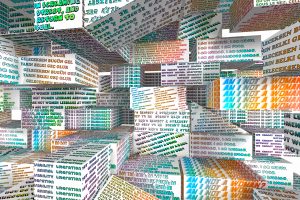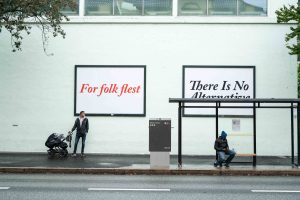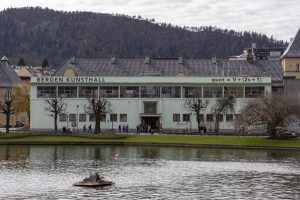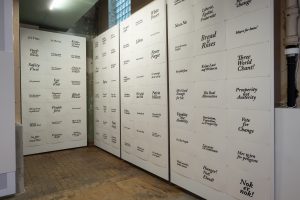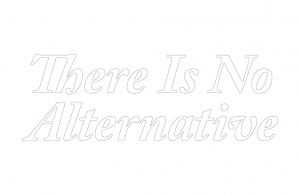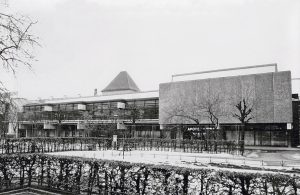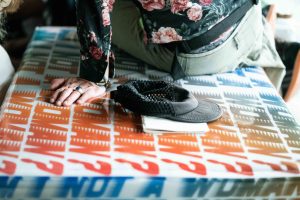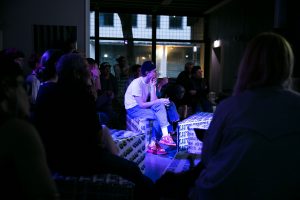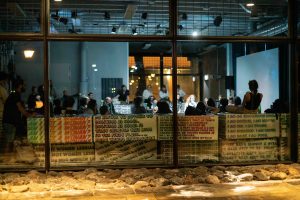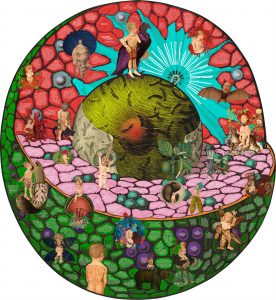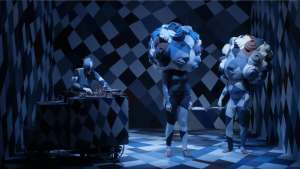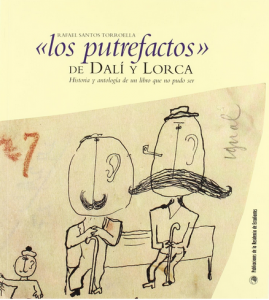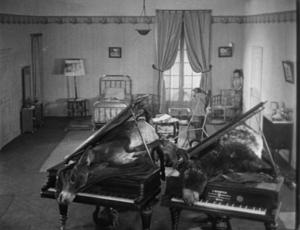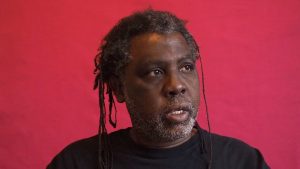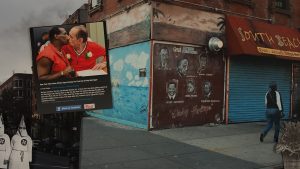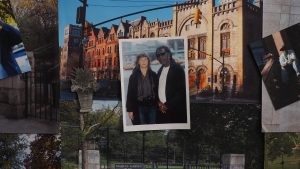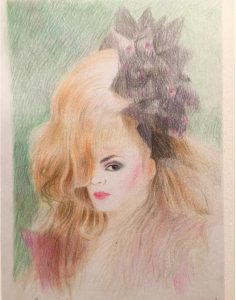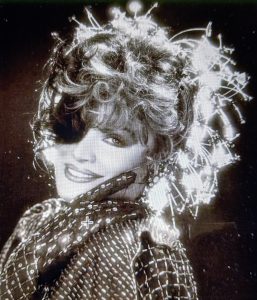Aérea Negrot is a multi-purpose, long-lasting, singer-producer-DJ-composer-performer in a bottle. Just as her name is not simple to pronounce, Aérea Negrot’s style is not easy to categorise. Of course, that is not to say that her music is inaccessible or obtuse, but rather that she has crafted her own unique approach, combining technoid grooves, operatic vocals, and abstracted pop. As a studio producer, vocalist, trained ballet dancer, and DJ, she owns not just the stage but also the means of production. Aérea Negrot allows her various disciplines to overlap into something delightfully demented, bursting with personality, nimbly leaning towards the future while still keeping one pinky-toe in the traditions of classicism.
RELATED PLATFORM
RELATED EVENT
b. 1966, Almoradí, Spain; lives in Barcelona, Spain
World’s Best Democracy, 2018–19
Daniel G. Andújar works across the fields of art, politics, research and the appropriation of digital technologies. In the World’s Best Democracy he exposes the framework and the guts of the archive that act as a ‘fascist machine’. But a fascist machine can be redirected and used against its original leader – hence the situationist strategy of détournement. A dissident and radical machine can be redirected against its original mechanics, perhaps by hacking its software. At a time when algorithms dictate our present and monitor our existence, it is worth paying attention to the algorithms that have been influencing our political system for decades.
In a world saturated with images, media impacts and all kinds of advertising intrusions, it remains surprising to see how the marketing techniques of political propaganda still manage to find a place amid so much competition, still manage to get their messages across and evoke their siren song. Reflecting on how political propaganda has acted upon us through the concentration of media dependent on economic and political interests, one can recall the history and tactics of National Socialism to understand that this is not something new. The strategy is still clear and, in the context of highly invasive digital media and social networks, little has changed.
In fact, the strategy has evolved to become more personalised. Through sophisticated algorithms our governments and institutions, political and economic powers, continue to feed their propaganda, directing it to global channels of imposition for hegemony and homogeneity. Language becomes a tool of conspiracy and manipulation, an exercise of domination and domestication, rather than a language of democracy, an artificial universe that seems completely real.
CONTRIBUTIONS
World’s Best Democracy (Algorithm + Political Slogans), 2019
Public interventions at Bergen Kunsthall and other locations
Variable dimensions
Système pratique et raisonné de représentation proportionelle, 2019
Digital print, colour
Presented at Bergen Kunsthall
World’s Best Democracy (Political Slogans), 2019
Series of drawings executed by a robot, 42 x 59,4 cm, each
Based on a collection of political slogans from various parties, countries and times
Co-produced by Bergen Assembly 2019
Presented at Bergen Kjøtt
Battle Cry, 2019
Colouring book, 11×16 cm, 192 pages
Co-produced by Bergen Assembly 2019
Presented at Bergen Kjøtt
How To Understand The D’Hondt Method (Democracy), 2018
Video, 32’50”
Presented at Bergen Kjøtt
Everyone has their particular vision of democracy, but few know their rules in depth. At a time when the algorithm dictates our present and monitors our existence, it is worth paying attention to the algorithms that have influenced our political system for decades. In 1878, Victor D’Hondt – a Belgian lawyer, salesman, mathematican, and jurist of civil law at Ghent University – surprised the world with his book The Proportional Representation of the Parties by Each Voter. Today, this method is called D´Hondt´s Method, and is among other countries, also used in Norway in order to best allocate mandates in a proportional manner during elections within the county councils.
Manifesto of the Communist Party, 2019
Video, colour, sound, 96’
Presented at Bergen Kjøtt
Animation reading the Manifesto of the Communist Party by Karl Marx .
RELATED EVENTS
RELATED PLATFORMS
Exhibition
Andreas Angelidakis is a self-defined ‘architect who doesn’t build’. Instead he utilises an artistic voice that switches between the languages of architecture, curating, writing, and the internet. He often speaks about spaces, buildings, and the society that inhabits them, with the exhibition format acting as a vehicle for his ideas and a medium for his artistic practice.
Recent exhibitions include Demos– a reconstruction at the Museum of Contemporary Art (MOCA),Toronto; I used to build my feelings, now I watch them leave at La Loge,Brussels; and at documenta14 in Kassel and Athens. Currently he is working on his contributions to the Biennale of Moving Images at OGR in Torino, a large-scale installation for Art Basel Unlimited, and a solo exhibition at TheBreeder gallery in Athens titled A Submissive Acknowledgement of Powerlessness.
CONTRIBUTION
The Parliament of Bodies collaborates with the architect and artist Andreas Angelidakis to create a new iteration of his soft architecture that can be assembled and reassembled in countless ways to reorganise the inner structure of the space and to create different platforms for enunciation, speech, display, or action. Angelidakis’ latest iteration called LOGOS (2019) brings together quotations by some of the artists and thinkers who have inspired the programme of the PoB for Bergen Assembly, including among others, Joanna Hevda, María Galindo, Virginie Despentes, Pedro Lemebel, Jack Halberstam, Audre Lorde, and Bergen.
RELATED PLATFORMS
The Parliament of Bodies
Exhibition
Betty Apple comes from a Y generation of avant-garde artists in Taiwan. She received her B.A. in Theater and M.A. in New Media Art at the Taipei National University of the Arts. Betty Apple’s art (and music) focuses on using body politics and performativity as her framework. Drawing on her lived experience as a millennial living in post-colonial Taiwan, the main idea is to symbolise what is repressed by the seemingly perfect/accurate sound of science and patriarchy. Her work appropriates symbolic objects from kitsch culture and consumer society as sound performance elements: mass-produced objects intended for eroticism or entertainment, such as vibrators, underwear or a high-heeled sex doll’s body, are carried inside the body through violent and grotesque means.
RELATED PLATFORM
RELATED EVENT
b. 1900, Remscheid, Germany; d. 1988, The Hague, Netherlands / b. 1876,
Herdorf, Germany; d. 1964, Cologne, Germany / b. 1894, Cologne, Germany;
d. 1933, Cologne, GermanyLumpenbälle
Lumpenbälle
The debates among the group that Sanders had photographed as ‘Proletarian Intellectuals’ – Else Schuler, Tristan Rémy, Franz Wilhelm Seiwert and Gerd Arntz – revolved around whether the prevailing aspect of the revolutionary nature of carnival was the reversal of sexes, transvestism, the disruption of social roles or the subversion of the political order. These were the same questions that Mikhail Bakhtin explored in reference to ‘carnival’ as a form of expression and its use of transgression as a political tool.
The photographs by August Sander, designs by Franz Wilhelm Seiwert and illustrations by Gerd Arntz that are grouped here under the title Lumpenbälle (after the costume party organised at the tavern Em Dekke Tommes by the Progressive Artists group during the Cologne Carnival from 1925 to 1933) reflect the interest in the subaltern classes shown by a section of the socialist and constructivist avant-garde, as well as their desire to try out a ‘festive’ way of thinking, which was linked to the subversion of the social order that has always been implicit in carnival celebrations.
Around the same time, Roma artist Helios Gómez met Arntz in Berlin and started contributing to the magazines Besinnung und Aufbruch and A bis Z. He also participated as an extra – as a Spanish bandit – in a film made in Cologne, and appears to have been among the group portrayed in Sander’s collage on the wild years in Cologne. What interests us about this digression is the etymological sense of the term ‘lumpen’, from the German ‘Lappen’, meaning cloth or rags, those collected by the rag-and-bone man, the ‘gypsy ragpicker’, to use Walter Benjamin’s term. Not just a costume, but a bad costume cobbled together out of leftovers, scraps and waste materials, in an economy of resistance. That was also how Arntz envisaged the power and possibility of lumpen-proletariat thinking.
The lives of August Sander, Franz Wilhelm Seiwert and Gerd Arntz overlapped from approximately 1926 to 1933, as part of the festive, experimental evolution of constructivist trends in painting, photography and design. The ‘lumpen-proletarianisation’ was, in a sense, linked to this festive understanding of political activity. In many ways, the new kinds of social activism that emerged in the late 20th century returned to the possibilities of fun as a political strategy.
CONTRIBUTIONS
Gerd Arntz, woodcut prints, 1924–37 Zwölf Häuser der Zeit (Twelve Houses of the Time), 1927, series of 12 woodcuts, 26 × 16 cm each, facsimile reprints; Amerikanisches (American), 1924/79, screenprint after a woodcut from 1924, 32 × 48 cm, courtesy Galerie Valentien Stuttgart; Show, 1937, woodcut, early printing, 29.5 × 46.5 cm, courtesy Galerie Valentien Stuttgart; Der Streik (The Strike), 1936/79, wood block, colourised, 21 × 30 cm, courtesy Galerie Valentien Stuttgart
Franz Wilhelm Seiwert, letterpress postcards for Lumpenbälle, c. 1925–32
Selection of five, 14.8 × 10.5 cm each, facsimile reprints, courtesy Museum of Modern Art, New York / SCALA, Florence
August Sander, Köln wie es war (Cologne as it was), 1929–31
Lumpenball series, selection of ten, and Coellen aus Rand und Band (Cologne going wild), 27.3 × 20.9 cm, each, facsimile reprints, courtesy Kölnisches Stadtmuseum, Cologne
RELATED PLATFORMS
Exhibition
b. 1948, London, UK. Lives in Vienna, Austria and London, UK
John Barker, has written extensively on political economy for over forty years, as well as writing fiction and a memoir. A partial archive of this work can be found at www.theharrier.net. Barker and Doujak collaborate on various projects.
CONTRIBUTIONS
Ines Doujak / John Barker
Economies of Desperation, 2018
Carpet, self-adhesive vinyl sticker
Merging the shapes of a cell nucleus, the internal structure of the Earth and of brain cells, this carpet reads like an encyclopaedia and cosmology of the current routes, logics and infrastructures of death politics ranging from drug to organ trafficking, from labour exploitation to war, from the deadly rejection of refugees to the destruction of the planet. This dystopian world is inhabited by miraculous beings in-between the human, the animal and the botanical.
RELATED EVENT
Ines Doujak / John Barker
Masterless Voices, 2014 (video, 30’)
Single screening during Introduction Days
Masterless Voices is a musical based on the themes of carnival, utopia, and rebellion. It begins with a singing mountain. Once, European explorers climbed the Andes on the backs of indigenous carriers. Fed up with the exploitation of its resources, the mountain dons a skirt and sets out for carnival. Masterless Voices sing their unforgiving songs in the dark, sparks fly, and working women tell us that they are not dressed for conquering. A shameless investigator– sometimes naked and sometimes dressed in camouflage – goes out and about among the carnival masses in Bolivia and finds herself with a group of Brazilian Baile Funk dancers. She does not regret anything.
RELATED PLATFORMS
Exhibition
Los Putrefactos
Around 1925, once their time at the Residencia de Estudiantes in Madrid had created links between the work of Lorca, Buñuel, Dalí and the discreet Pepín Bello, the name Los putrefactos emerged as a term for all things stale, bourgeois, mawkish, academic and hegemonic. Their caricatures, humorous texts, poems and dithyrambs united them, almost like a secret society. Luis Buñuel and Salvador Dalí’s famous 1929 film Un Chien Andalou reflects, quite literally – the rotting donkeys on pianos, for example – many of the group’s ideas, although in this case the criticism was directed at one of the group’s founders, Federico García Lorca. As the critic Rafael Santos Torroella argued, homosexual relations were the suppressed content that united and divided the group. And their critique, grounded in this ambivalence, ranged from crude caricature to the political order, always with a festive spirit. It is interesting to observe how an ostensible critique of the established order turned against the critics themselves, imploding and eventually leading to estrangement between Buñuel, Lorca and Dalí. Pepín Bello left various written accounts of how the ghost of Los putrefactos permanently affected the relationship between the three great artists. Thus, traces of these private jokes can be found in masterpieces like Lorca’s Poet in New York (1936–40), Buñuel’s The Exterminating Angel (1862) and Dalí’s The Tragic Myth of Millet’s Angelus (1935–63).
Federico García Lorca (b. 1898, Fuente Vaqueros; d. 1936, Víznar), Salvador Dalí (b. 1904, Figueres; d. 1989, Figueres), Luis Buñuel (b. 1900, Calanda; d. 1983, Mexico City) and Pepín Bello (b. 1904, Huesca; d. 2008, Madrid) were artists, working as such or not, who belonged to the generation of the Republic and were also part of the international avant-garde scene. According to the least well-known member of the group, Pepín Bello, the infamous assassination of Lorca by the Spanish fascists put an end to the Los putrefactos project for good.
CONTRIBUTIONS
Luis Buñuel, Un Chien Andalou, 1929, film, black and white, silent, 21′
Various publications and archival material
RELATED PLATFORMS
b. 1965, Oslo, Norway; lives in Oslo, Norway and Berlin, Germany and New
York, USA
Lene Berg often uses documentary material in her narratives to challenge notions of truth and to scrutinise the veracity of filmic media as such. Her artistic practice spans installation, film, collage and text-based work. Berg has directed four feature films and represented Norway in the 55th Venice Biennale with the film Dirty Young Loose (2013).
CONTRIBUTION
False Belief, 2019
Film, 103′, DCP, English dialogue, Norwegian subtitles
Screenings in the frame of the Bergen International Film Festival,
25 September–3 October 2019, followed by open discussions with the director and the film’s main character
In False Belief artist and filmmaker Lene Berg reconstructs her Kafkaesque journey through the US justice system, as her partner is arrested, convicted and imprisoned without cause in New York City. In 2008 Berg moved to Harlem with her partner, a black man, a publisher who is referred to as D. After giving the police a statement about being harassed by a neighbor, D was arrested without knowing what exactly he was being accused of. This led to a series of catastrophic events where D’s implicit trust in the US justice system put everything he cherished at risk. False Belief tries to untangle the circumstances around this criminal case through D’s candid storytelling accompanied by Berg’s own narration, driven by still and moving images, court documents and collages. By analysing what at first seems to be a minor case, False Belief uncovers the larger picture of a society that employs incarceration as a political and economic weapon.
RELATED EVENTS
RELATED PLATFORM
Exhibition
Synnøve Bendixsen is an Associate Professor in the Department of Social Anthropology, University of Bergen. She has conducted research on refugees and irregular migrants in Norway, marginality, hospitality, young Muslims and religiosity in Germany, urban life and diversity. She has written journal articles, book chapters and co-edited several books on these topics, including the forthcoming Contested Hospitalities in a Time of Migration: Religious and Secular Counterspaces in the Nordic Region (Routledge, co-edited with Trygve Wyller). Bendixsen is the co-editor in chief for the Nordic Journal of Migration Research (with Lena Näre) and the series co-editor for the Palgrave Macmillan series Approaches to Social Inequality and Difference (with Edvard Hviding).
RELATED PLATFORMS
RELATED EVENT
The Turkish singer Belgin Sarılmışer (1958–1989), better known as Bergen, took the name of the Norwegian city as her alias. Bergen was famed in the 1980s as the ‘Queen of Arabesque’.
Her husband threw nitric acid in her face during one of her performances, blinding her in one eye. Nevertheless, refusing his violent attempts to silence and domesticate her, she continued performing using her glamorous hairstyle to cover her injury and established herself as Woman of Agony in the limelight of an ever-growing following.
Fatally shot by her husband in 1989, she has remained a complex symbol of sorrow and emancipation in Turkey to this day.
CONTRIBUTION
Introduction Days (6.4.2019)
Music clips, selection and introduction by Banu Cennetoğlu (videos, 15’)
RELATED PLATFORMS

